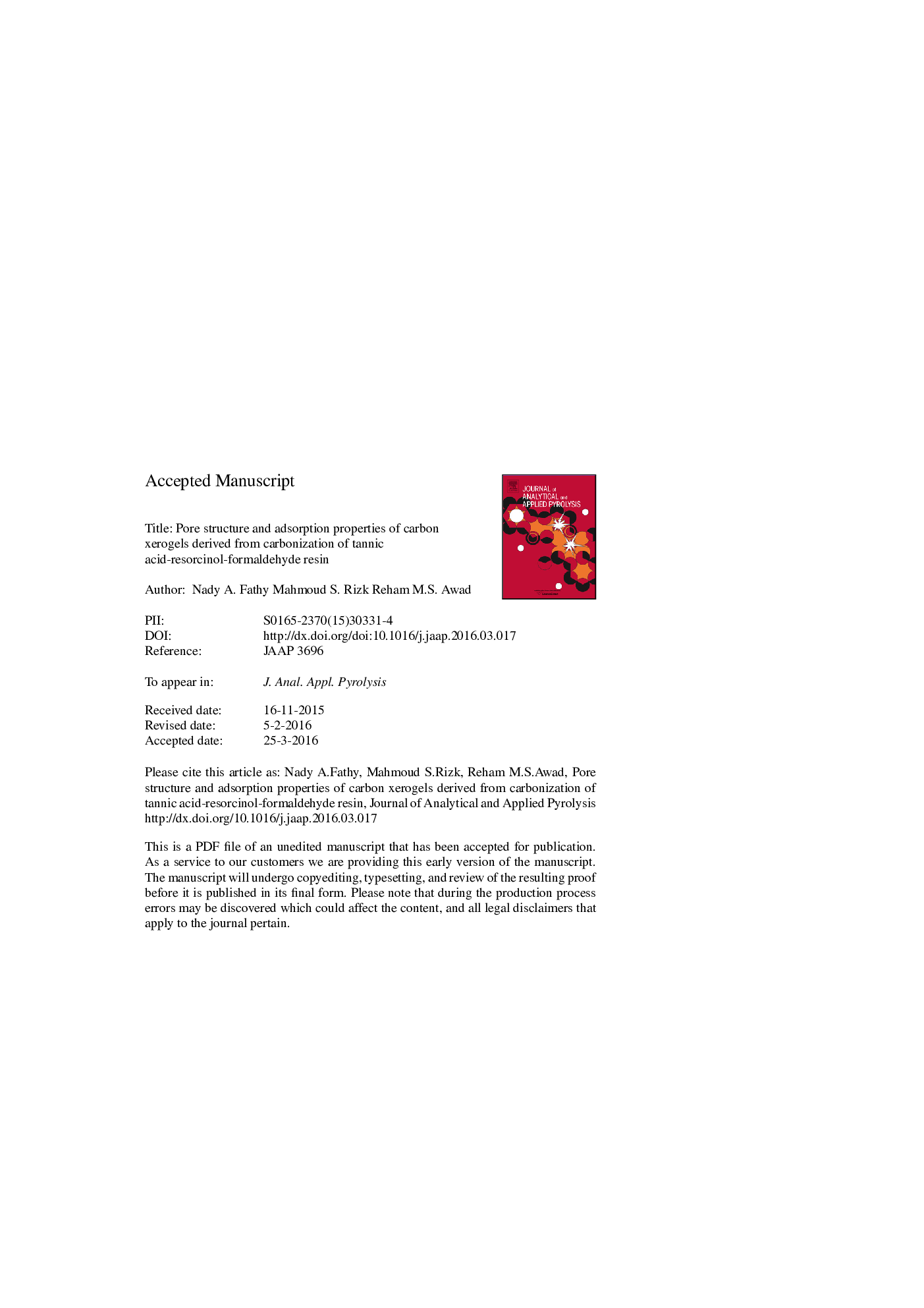| Article ID | Journal | Published Year | Pages | File Type |
|---|---|---|---|---|
| 7606572 | Journal of Analytical and Applied Pyrolysis | 2016 | 31 Pages |
Abstract
The paper describes a promising route for the synthesis of carbon xerogels using tannic acid- resorcinol-formaldehyde resin (TA-RF) as novel precursors for producing carbon gels with relatively low cost as compared to conventional RF xerogel. Tannic acid as a starting material for preparing these carbon materials is cheaper than resorcinol by about a factor of eight. The effect of both carbonization temperature (773, 873 and 973 K) and reaction time (30 and 60 min) on the microstructure of produced samples was studied. Four micro-mesoporous carbons, namely CX773-30, CX873-30, CX973-30 and CX773-60, were obtained and characterized by using element compositions of carbon, hydrogen and nitrogen (C, H and N), transmission electron microscopy (TEM), fourier transform infrared spectroscopy (FTIR) and N2 adsorption-desorption at 77 K measurements. Adsorption properties of the carbon xerogels obtained toward Pb(II) ions in aqueous solution as function of carbonization temperature and time were investigated. FTIR and TEM results showed that TA-RF xerogel possesses numerous surface functional groups and different shape of interconnected particles in its network as compared to RF xerogel. Carbon xerogel prepared at 973 K and carbonization time at 30 min (CX973-30) given the maximum BET surface area (248 m2 gâ1) and total pore volume (0.183 cm3 gâ1). Thus the pyrolysis temperature of 973 K and time of 30 min as carbonization conditions for tannic acid-resorcinol-formaldehyde precursor (TA-RF) were the most effective for development of the pore structure of the gel. High adsorption capacity for Pb (II) ions by CX973-30 was obtained (Q = 250 mg gâ1) with initial concentrations ranging from 100 to 500 mg Lâ1 at pH 5.5, and the adsorption isotherm for lead ions followed Langmuir model. The outcome of this study promoted that tannic acid having good potential to be used as carbon precursor and could be polymerized with resorcinol-formaldehyde for preparing carbon xerogels with highly tailored porosity and adsorption capacity.
Keywords
Related Topics
Physical Sciences and Engineering
Chemistry
Analytical Chemistry
Authors
Nady A. Fathy, Mahmoud S. Rizk, Reham M.S. Awad,
